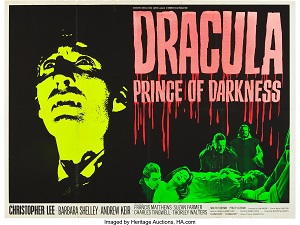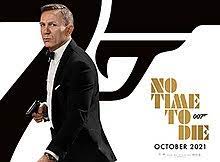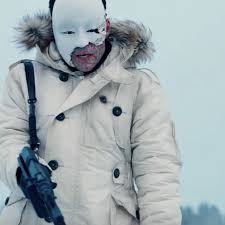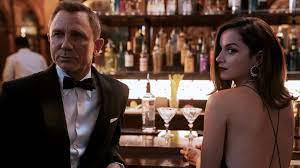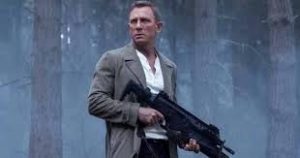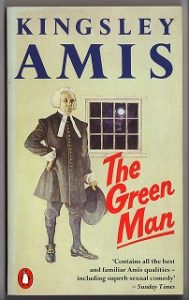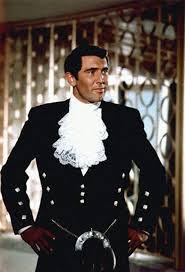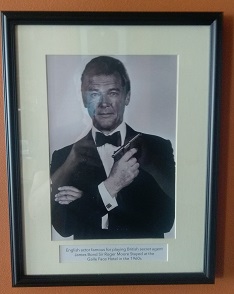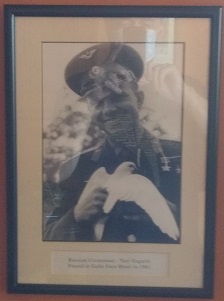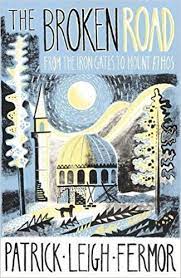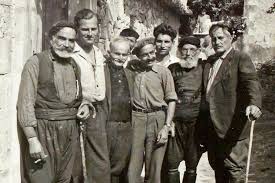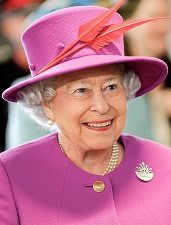
From wikipedia.org / © Joel Rouse / Ministry of Defence
A week has now passed since the Platinum Jubilee festivities – and the accompanying tsunami of media hype – that celebrated Queen Elizabeth II reaching the 70th year of her reign on the British throne. I’ve now emerged from my bunker and feel ready to articulate my thoughts about the British Royal Family. It’s fair to say my tolerance of the institution has waxed and waned over the years.
In my youth, during the 1980s and 1990s, I detested them. They seemed a bloody awful lot and it sickened me how much the media kept ramming them down everyone’s throats, though of course, a lot of the public seemed happy to have them rammed down their throats: the aloof Queen and her grumpy husband; the weird and socially awkward Prince Charles and his vacuous-seeming wife Princess Diana who, as it turned out, was sharper than she looked; the porcine Prince Andrew who, as it turned out, was viler than he looked; and the insipid would-be thespian Prince Edward. Princess Anne, however, I didn’t think was that bad, though that was probably only because she supported the national Scottish rugby team.
I knew ordinary people who were every bit as mediocre or dysfunctional as the royals, of course, but I didn’t have to hear about them every time I switched on the television or read about them every time I opened a newspaper. It also galled me that not liking them or even not wanting to know about them was considered unpatriotic in 1980s and 1990s Britain.
Fast forward to 2012, the time of the Queen’s Diamond Jubilee, and my opinion was more sanguine, at least of Elizabeth. It was one of indifference tempered with a certain, grudging respect for the old biddy. This was partly because I’d concluded that countries needed their symbolic heads of state – someone to open the supermarkets, launch the ships and sit down and sip tea with the US President or the Pope or whatever foreign dignitary happened to be in town. This was the stuff that the prime minister didn’t have time to do because he or she had a country to run. And the Queen had won a modicum of respect from me simply by doing her job for so long. She grew older, greyer, smaller, but still she did her walkabouts, made her public appearances, indulged in boring chit-chat with members of women’s institutes, rotary clubs and Boy Scout troops who’d turned out to see her, and had disreputable politicians come through the doors of Buckingham Palace – Bush, Berlusconi, Sarkozy – whom she put on a smile for.
If someone had forced an 86-year-old relative of mine onto the street every morning and made her tramp around the neighbourhood all day long, saying hello to people, and then when she finally returned to her house, foisted a shower of crooks and chancers upon her for company, I’d have reported them to the police. The Queen might have been one of the richest women on the planet, but what was the point of having shed-loads of money if you were subjected to torture like that every day of your life?
So back in 2012, I thought I could tolerate the idea of a British monarchy. That toleration, though, came with the proviso that the thing needed to be massively scaled down. The inhabitants of the Low Countries and Scandinavia had modestly-sized royal institutions and seemed no less respectful of their monarchs like Albert, Beatrix, Margrethe, Harald and Carl XVI Gustav, so why couldn’t that be the case in Britain? Why did the British Royal Family have to be such a massive and costly operation, featuring as many cast-members as an opulent and labyrinthine American soap opera like Dallas or Dynasty?
That was then, however. Maybe at the time I’d been infected by Danny Boyle’s Opening Ceremony at the 2012 London Olympics and believed that with a bit of tweaking – for instance, modifying but not removing the Royal Family – Britain could become a decent, balanced, good-humoured and modern-minded country. Also, I was a big James Bond fan and, at the Opening Ceremony, I thought it was pretty cool when the Queen, or possibly her stunt double, parachuted out of a plane with Daniel Craig.

From pixabay.com / © Ben Kerckx
Now I just want the whole thing gone. Abolishing the monarchy the moment the Queen dies would be fine by me. My reversion to republicanism isn’t so much to do with the Queen herself, though she certainly hasn’t done herself any favours in recent years with the revelations about how much of her money is invested in dodgy, tax-avoiding offshore accounts or her eagerness to fund her second son’s 12-million-pound settlement with Virginia Giuffre, who claimed Andrew had sexually assaulted her while she was being trafficked as a minor by Jeffrey Epstein. (Andrew was unable to make an appearance at last week’s Platinum Jubilee festivities because he was stricken, supposedly, with Covid-19. Aye, right.) It’s more to do with the state of Britain. The place is now such a basket-case that it needs to have its Royal Family surgically removed – one of many drastic treatments required if it’s to make any sort of recovery.
For one thing, the Royal Family is the ultimate symbol of Britain’s neurotic obsession with the past. Remove that symbol and you might go some way to breaking the obsession, which hobbles the country left, right and centre.
There’s the dire state of its governing institutions, where more attention is paid to witless Ruritanian flummery like the State Opening of Parliament (the crown getting transported to the Houses of Parliament in a carriage of its own, the ridiculously ruffed Black Rod getting Parliament’s door slammed in his or her face) than to the constitution, which is unwritten and open to abuse by unscrupulous politicians, like the shower we have in office at the moment. The argument is that Britain’s constitution is protected by some absurd, Boy’s Own Paper-style, ‘good chaps’ theory of government. I’d struggle to describe the grinning war criminal Tony Blair, or the squish-faced posho David Cameron, or the Mother of Tears herself Margaret Thatcher as ‘good chaps’; but surely not even the most naïve person in the universe would bestow that term on the current incumbent of No 10 Downing Street.
There’s also the embarrassing preoccupation many Britons have with the Second World War and everything that goes with it (Churchill, the Blitz, Spitfires, Dame Vera Lynn), although to have even childhood memories about the conflict now you’d need to be in your 80s. In 2016, that finest-hour, standing-alone, ourselves-against-the-world narrative was exploited by self-serving ratbags like Nigel Farage, who managed to conflate the European Union with the Third Reich in some people’s minds and got them to vote for the economic and political disaster of Brexit.
Predictably, Britain’s obsession with the past is focused on the nice bits of history – pomp, pageantry, Ladybird Adventure from History books, stiff-upper-lipped World War II movies. There’s not much focus on the misery, poverty and injustices that the British Empire inflicted on millions of its ‘subjects’. Meanwhile, with this mentality, Britain is never to going to have a scaled-down monarchy like the Swedes, Dutch, Belgians, etc., have. It’s always going to be the full-on, super-expensive deal with parades, carriages, horses, bands, guardsmen and so on. It’s like some balding, beer-gutted, 50-something football hooligan covering himself in bling and believing he still looks ‘hard’.
I’d do away with the monarchy too because of the depressing sycophancy it engenders in British society. Everyone who comes into contact with the royals, and with the Establishment generally, seems to immediately de-evolve into a mollusc, apparently on the assumption that the more obsequious you are, the better your chances are of securing a CBE, OBE, knighthood or whatever. This is never more obvious than in the country’s press. British journalists do so much brown-nosing – presumably hoping that one day Her Majesty will reward them with an honour for services to toadying – that their pages, or webpages, seem to turn the colour of shite while you read them.
Inevitably, this brown-nosing was at its brownest during last week’s Platinum Jubilee. And it wasn’t done just by right-wing journalists and politicians wanting to use the Queen as a Culture War ruse to distract attention from the fact that under the current Conservative government there’s a lying sleazeball as Prime Minister, the country’s economic growth is on track to be second-worst in the G20 (after Putin’s pariah-status Russia), and nearly 180,000 people have died from Covid-19 in the last two years.
Keir Starmer, leader of the opposition Labour Party and someone whom you’d expect to be at least a teensy-weensy bit socialist, wrote in the swivel-eyed, reactionary Daily Telegraph that it was our ‘patriotic duty’ to celebrate the Platinum Jubilee. There it is again – you’re not patriotic if you don’t like the Queen. Meanwhile, former Liberal Democratic leader Tim Farron tweeted: “You don’t need to think that everything about Britain is wonderful, just that being British is wonderful and that the Queen’s reign has been remarkable.” No, Tim, the Queen doesn’t know who you are. She isn’t going to give you a knighthood.
So yes, I just want the monarchy gone. Goodbye Queen, goodbye Prince Charles, goodbye William, Kate and the kids, goodbye all of them. But obviously, that isn’t going to happen. The British Royal Family will endure, undeservedly. And as for the country they’re supposed to represent… Well, I now think it’s beyond all hope.

From pixabay.com / © Sabine Lang




